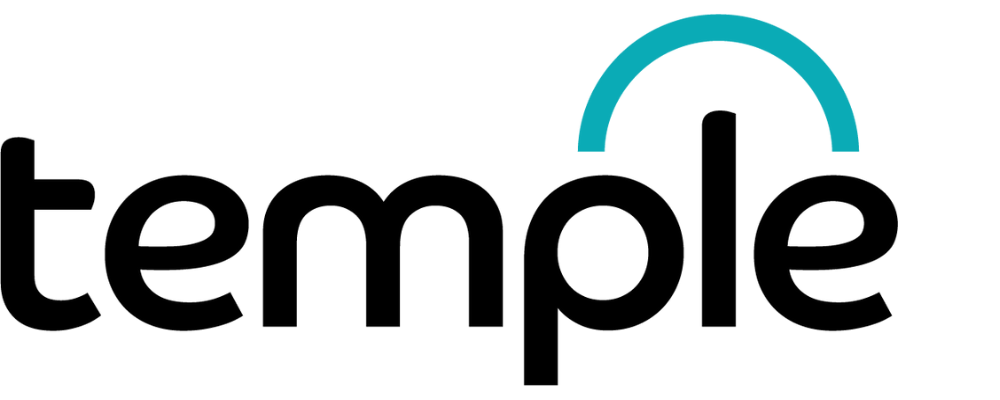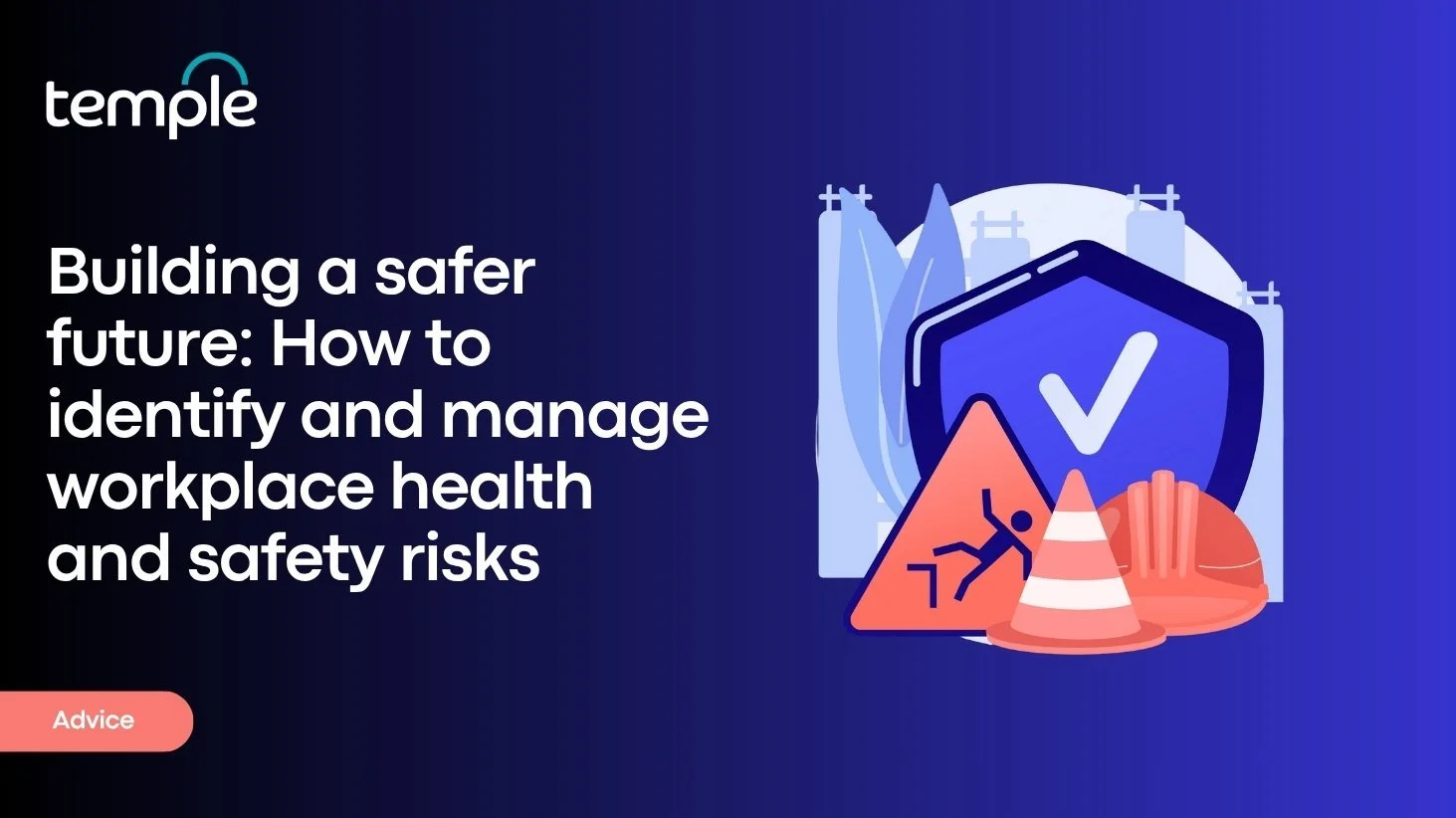How to Identify and Manage Workplace Health and Safety Risks
At Temple QMS, we believe that a healthy and safe workplace is the foundation of a resilient, high-performing business. Effective occupational health and safety (OHS) management is not simply about compliance – it’s about protecting your most valuable asset: your people.
When employees experience injury, illness or stress, the consequences go far beyond lost time. Productivity suffers, morale declines, and workloads shift unpredictably. For many businesses, these disruptions quickly translate into reputational damage, legal exposure and financial strain.
That’s why proactive OHS risk management is essential – and why we’re here to help. Through expert consultancy and tailored training, Temple QMS supports organisations across all sectors in building robust safety cultures, implementing ISO 45001 compliant systems and driving continuous improvement.
Understanding the Nature of OHS Hazards
A hazard is any work-related situation, activity or condition that has the potential to cause harm. These are often overlooked until an incident occurs – but identifying and mitigating them early is the key to prevention.
Hazards can include:
Frayed electrical wiring
Unsafe handling of chemicals
Repetitive or high-stress tasks
Poorly managed workloads
Lack of appropriate facilities or equipment
Uncontrolled hazards lead to risk – and unmanaged risk leads to harm.
Common Health and Safety Risks
Workplace risks are wide-ranging and often interconnected. Some of the most prevalent include:
Mental ill-health: Burnout, stress and anxiety can severely impact employee engagement and performance.
Fatigue and overwork: Long hours and lack of rest lead to mistakes, injuries and chronic illness.
Communicable diseases: Infections like COVID-19 can spread rapidly, disrupting operations.
Environmental and structural issues: Poor ventilation, unsafe water or food handling, and exposure to radiation or chemicals create long-term health problems.
Workplace injuries: From slips and strains to serious accidents, unsafe conditions can have lasting consequences for individuals and teams.
Types of Workplace Hazards
Every organisation, regardless of size or industry, faces some combination of the following six hazard types:
Safety hazards: Machinery, heights, electricity and other physical risks require strict protocols.
Chemical hazards: Fumes, gases and flammable materials must be handled with appropriate PPE and controls.
Physical hazards: Noise, poor lighting, radiation and extreme temperatures demand regular monitoring.
Ergonomic hazards: Repetitive motions, poor posture and inadequate workstations can lead to musculoskeletal disorders.
Biological hazards: Mould, bacteria and bodily fluids pose health risks, especially in healthcare and food environments.
Psychosocial hazards: Bullying, harassment and stress can deeply affect staff wellbeing and workplace culture.
The Real Cost of Poor OHS
Beyond immediate health implications, poor OHS management carries substantial financial and operational costs:
Lost productivity and downtime
Increased recruitment, training and insurance expenses
Legal claims and administrative burdens
Erosion of trust, brand damage and reputational risk
At Temple QMS, we work with businesses to minimise these risks through proven systems, helping them to create safe, efficient, and resilient environments.
How to Reduce OHS Risks: A Practical Approach
1. Identify Workplace Hazards
Start with a comprehensive review. Conduct inspections, analyse incident data, and speak with your team. Consider all work locations – including remote or home-based environments.
2. Assess and Control Risks
Evaluate the likelihood and severity of harm, then introduce appropriate control measures. This may include physical adjustments, training, revised processes, or cultural interventions to address issues like stress or disengagement.
3. Review and Adapt Controls
Risk is not static. Regularly review controls, especially when introducing new services, expanding your team, or responding to external changes such as economic shifts or new legislation.
4. Keep Detailed Records
Documentation strengthens legal compliance and demonstrates accountability. At Temple QMS, we guide clients in setting up effective record-keeping systems to track assessments, inspections, corrective actions and outcomes.
5. Monitor, Measure and Improve
Track OHS performance over time. Establish clear KPIs and conduct periodic management reviews to ensure controls remain effective and relevant. This allows you to stay ahead of emerging risks.
Strengthening Risk Management Through ISO Standards
International standards such as ISO 45001 and ISO 45003 offer a framework for building and maintaining an effective OHS management system. These standards emphasise:
Context analysis and stakeholder engagement
Leadership and accountability
Hazard identification and employee consultation
Competency and training
Performance monitoring and continual improvement
At Temple QMS, we provide expert ISO 45001 implementation support, internal audits, and training programmes to embed health and safety into your organisational DNA.
Tailored Solutions for Organisations of All Sizes
Large Enterprises
Corporations are under increasing scrutiny to deliver on governance, transparency and sustainability. A proactive OHS strategy helps to:
Improve brand reputation and investor confidence
Strengthen corporate social responsibility (CSR) initiatives
Build stakeholder trust and protect long-term interests
Small and Medium-Sized Businesses
With smaller teams, even one incident can have a major impact. Effective OHS management helps SMEs to:
Secure contracts by meeting client safety requirements
Minimise disruption from staff absences
Motivate teams and attract skilled workers
Maintain affordable insurance coverage
Temple QMS understands the different pressures faced by large and small organisations – and offers scalable, practical solutions to meet your needs.
Your Blueprint for Sustainable Success
Embedding good OHS practice is more than a compliance exercise – it’s a strategic advantage. By fostering a proactive safety culture, you reduce operational risks, improve workforce morale and demonstrate responsible leadership.
Let Temple QMS help you take the next step in your health and safety journey. Through consultancy, training and systems support, we empower organisations to protect their people, exceed industry standards and build a future-ready business.
Contact us today to learn how we can support your organisation in strengthening its OHS performance – and building a workplace where everyone thrives.

